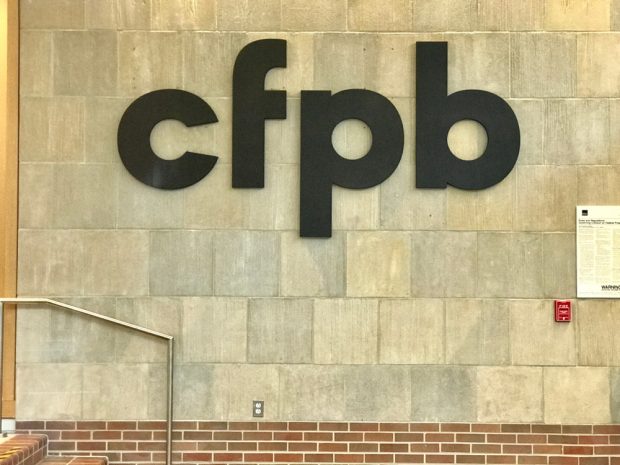 CFPB headquarters. (Source: Shutterstock)
CFPB headquarters. (Source: Shutterstock)
The CFPB reminded lenders Thursday that per the Equal Credit Opportunity Act (ECOA), denying a loan application or taking another adverse action against an applicant must be followed with an explanation to the applicant as to why they were denied or the action was taken – even if the lender used advanced algorithms to make the credit decision.
The reminder was published in the CFPB's latest Consumer Financial Protection Circular, which contain policy statements and are released periodically to advise parties with authority to enforce federal consumer financial law. It was issued at a time when a growing number of lenders, including credit unions, are turning to artificial intelligence-based technology as an option for evaluating loan applicants (this process is sometimes referred to as a "black-box" credit decisioning model). The CFPB warned that if the technology does not inform lenders of the specific reasons behind a denial or other adverse action, they will not be able to comply with the federal discrimination law.
Recommended For You
"Companies are not absolved of their legal responsibilities when they let a black-box model make lending decisions," CFPB Director Rohit Chopra stated in a news release detailing the circular. "The law gives every applicant the right to a specific explanation if their application for credit was denied, and that right is not diminished simply because a company uses a complex algorithm that it doesn't understand."
The CFPB emphasized that regardless of the type of technology they utilize, organizations that extend credit to consumers must abide by all federal consumer financial protection laws, including the ECOA, and that they "cannot justify noncompliance with ECOA based on the mere fact that the technology they use to evaluate credit applications is too complicated, too opaque in its decision-making, or too new." The ECOA is designed to protect individuals and businesses against discrimination when seeking, applying for and using credit, and requires creditors to provide a notice when it takes an adverse action against an applicant, which must contain specific and accurate reasons for the action.
In response to the CFPB's announcement, CUNA Senior Director of Advocacy and Counsel Elizabeth Sullivan stated, "Few credit unions exclusively rely on these types of algorithms for underwriting, nor are there any new interpretations of Regulation B in this circular. We anticipate the impact for credit unions will be minimal as credit unions are already deeply committed to ensuring compliance with Regulation B and ECOA."
NAFCU commented that the CFPB's advisory could potentially further discourage credit unions from engaging with beneficial technology, however.
"The CFPB's announcement, taken together with its recent decision to scale back innovation-focused programs such as No Action Letters and sandboxes, may have a chilling effect on credit union efforts to develop and test new technologies, even if the newly published circular is mainly a reformulation of Regulation B's existing commentary," NAFCU Senior Counsel for Research and Policy Andrew Morris stated. "Algorithmic underwriting tools have long operated in compliance with ECOA, the Fair Credit Reporting Act and other consumer financial laws, and the CFPB has even acknowledged that certain types of algorithmic underwriting can improve access to credit. As these technologies evolve and mature, NAFCU will continue to educate the bureau about how new underwriting tools are benefiting consumers and ways the agency can support credit union innovation."
The CFPB acknowledged in the circular that historically, companies have been able to comply with federal consumer financial protection laws while using technology in their credit decision-making, stating, "law-abiding financial companies have long used advanced computational methods as part of their credit decision-making processes and they have been able to provide the rationales for their credit decisions."
© 2025 ALM Global, LLC, All Rights Reserved. Request academic re-use from www.copyright.com. All other uses, submit a request to [email protected]. For more information visit Asset & Logo Licensing.






